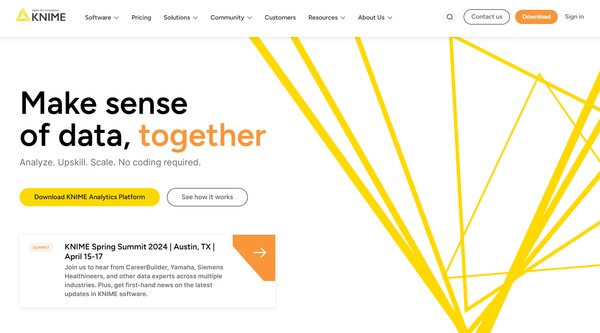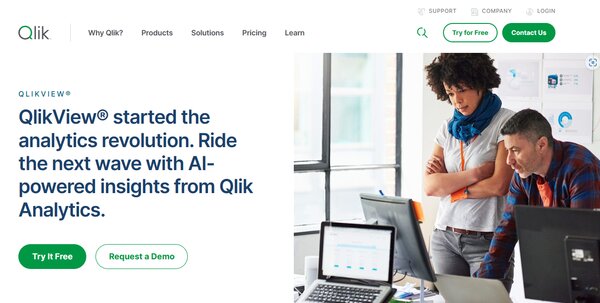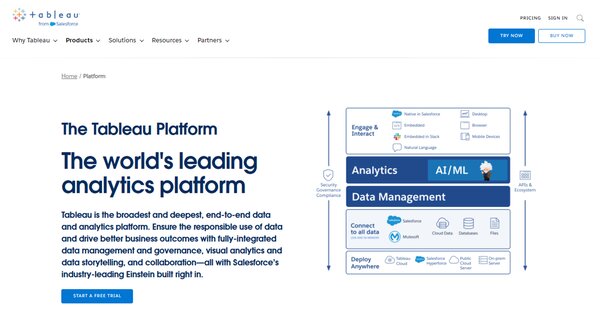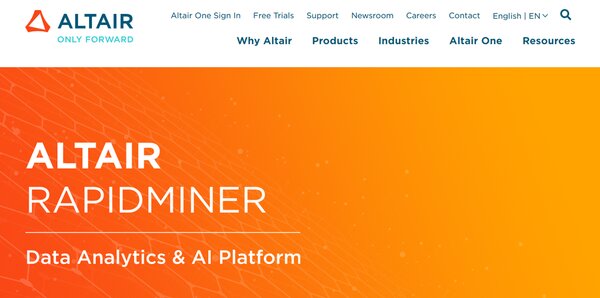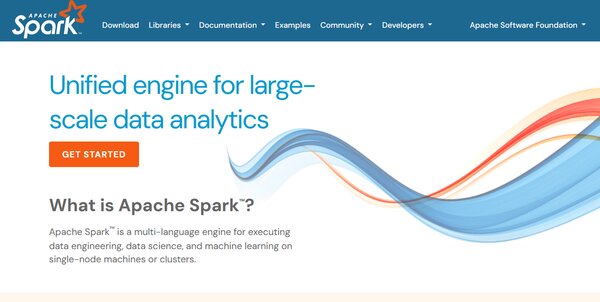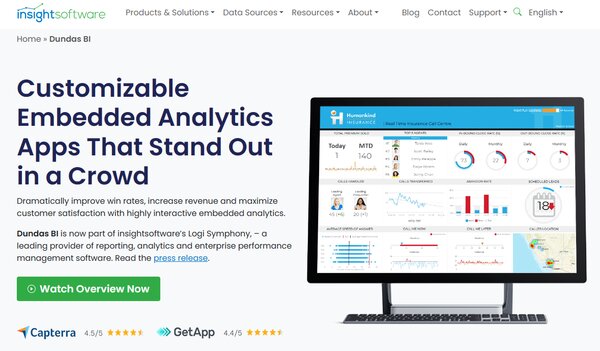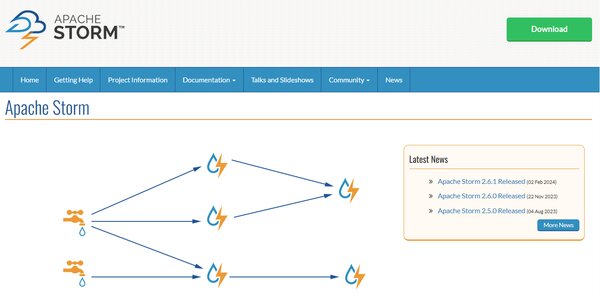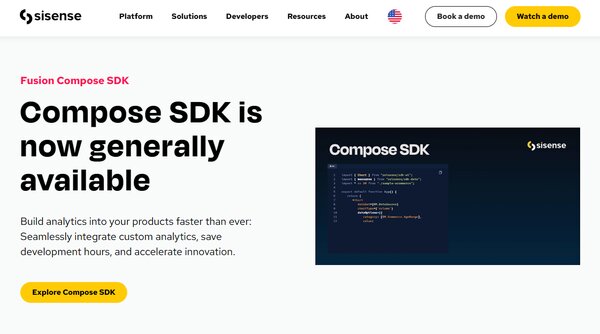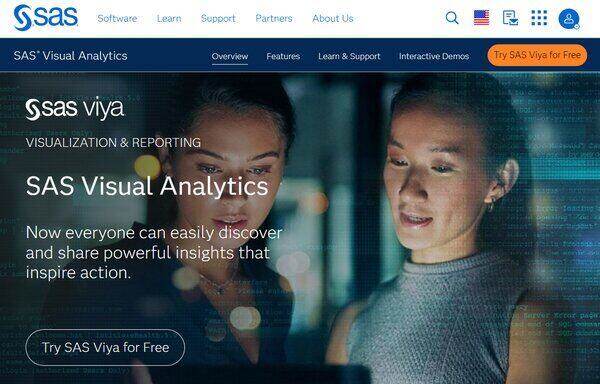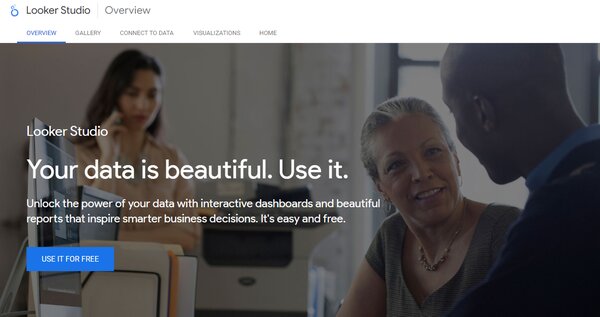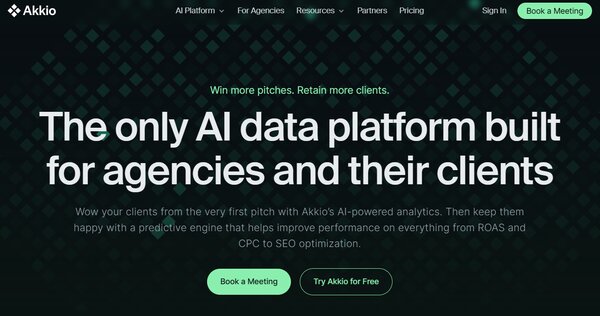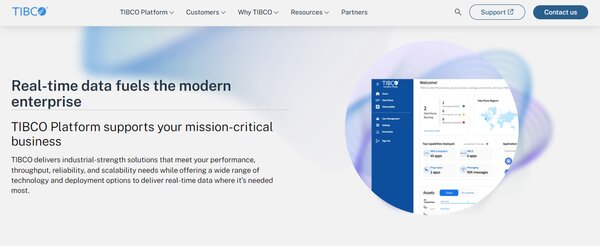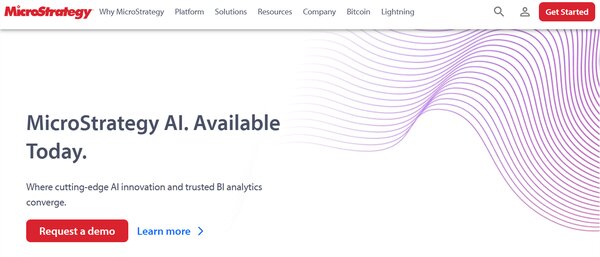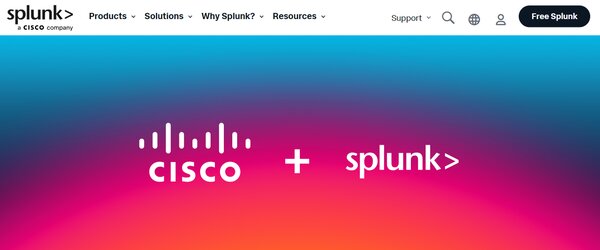15 Top Business Analytics Software
Top Business Analytics Software
Navigating the complex landscape of today’s business environment, companies are increasingly turning to top business analytics software to harness the power of data for strategic decision-making. The surge in digital transformation has made data more accessible, yet the sheer volume and complexity of this information can be overwhelming. Top business analytics software steps in as a critical tool, enabling businesses to analyze and interpret vast datasets, uncover trends, and predict future outcomes with greater accuracy. According to a recent study, the global business analytics software market is expected to grow significantly, underscoring the vital role these solutions play in driving operational efficiency, enhancing customer experiences, and fostering innovation across industries. By leveraging advanced analytics, machine learning algorithms, and intuitive dashboards, these software solutions empower organizations to make data-driven decisions that propel growth and competitive advantage.
The Need for Top Business Analytics Software
In today’s data-driven world, the ability to quickly analyze and act on information is a key determinant of business success. The need for top business analytics software has never been more pronounced. Organizations across various sectors face the challenge of sifting through mountains of data generated from multiple sources – be it customer interactions, operational processes, or market trends. Traditional methods of data analysis are no longer sufficient to keep pace with the rapid changes and complexities of the modern business landscape. This is where top business analytics software comes into play, offering sophisticated analytical capabilities that go beyond mere data visualization. These tools provide deep insights into business performance, customer behavior, and market dynamics, enabling companies to identify opportunities for improvement, optimize resource allocation, and tailor strategies to meet evolving market demands. Moreover, with the advent of artificial intelligence and machine learning, these software solutions are becoming increasingly adept at predicting future trends, allowing businesses to stay ahead of the curve. The strategic importance of these tools is further highlighted by their role in enhancing operational efficiency, reducing costs, and driving revenue growth, making them an indispensable asset for any forward-thinking organization.
15 Top Business Analytics Software
- KNIME
- QlikView
- Tableau
- RapidMiner
- Apache Spark
- Dundas BI
- Apache Storm
- Sisense
- Excel
- SAS Visual Analytics
- Looker Studio
- Akkio
- TIBCO
- MicroStrategy
- Splunk
How does Top Business Analytics Software work?
Top business analytics software functions by integrating data from various sources to provide a comprehensive view of a business’s operations. It collects data from internal systems like CRMs and ERPs, as well as external sources such as market trends and customer feedback. This software then cleans and organizes the data to ensure accuracy and relevance.
Once the data is prepared, the software employs advanced analytical techniques, including data mining, predictive analytics, and machine learning algorithms, to uncover patterns and insights. These insights help businesses understand their performance, identify opportunities for improvement, and predict future trends.
The top business analytics software also features data visualization tools that transform complex data sets into intuitive graphical representations like dashboards, charts, and graphs. These visualizations make it easier for stakeholders to understand the data, leading to quicker and more informed decision-making processes.
How to choose a Business Analytics Software?
Selecting the right Business Analytics Software involves a careful assessment of several key parameters and features. First, consider the specific needs of your business, including the types of data you need to analyze and the goals you aim to achieve with the analytics.
The software’s compatibility with your existing systems is crucial. It should seamlessly integrate with your current infrastructure to ensure smooth data synchronization and integrity. Look for software that supports a wide range of data sources and formats.
Usability is another important factor. The software should be user-friendly, enabling both technical and non-technical staff to navigate and utilize its features effectively. A steep learning curve can hinder adoption and productivity, so opt for a solution that offers an intuitive interface and comprehensive support and training resources.
Analytical capabilities are at the heart of any analytics software. Ensure the software has robust capabilities for data mining, predictive analytics, and machine learning to provide deep insights and forecasts. Additionally, consider the quality of data visualization tools available, as they play a significant role in how insights are communicated.
Finally, evaluate the total cost of ownership, including initial purchase, implementation, training, and ongoing maintenance. The software should fit within your budget while offering a good return on investment. Security features are also paramount to protect sensitive business data from breaches and ensure compliance with data protection regulations.
By considering these parameters, you can choose the top business analytics software that aligns with your business needs and empowers you to make data-driven decisions.
Business Analytics Software
1. KNIME
KNIME is a powerful and versatile open-source business analytics software that enables users to analyze and model data through visual programming. It simplifies data transformation, integration, and exploration by providing a graphical interface where users can drag and drop nodes to create data flows. This approach makes advanced data analytics accessible to users without extensive programming skills, fostering a broader adoption of data-driven decision-making across various industries. KNIME supports a wide range of data types and formats, making it a flexible tool for tackling complex data challenges, making it to the top of the list of top business analytics software.
What does KNIME do?
KNIME serves as a business analytics software for data preprocessing, blending, and analysis, facilitating the creation of data science applications and services. It allows users to perform a wide array of data analytics tasks, from simple data manipulation to complex machine learning model development, without writing code. KNIME’s modular data pipeline concept enables users to visually design their data processing steps, offering a clear and intuitive way to build sophisticated analytical workflows. This capability, combined with its extensive library of pre-built nodes for various analytics tasks, empowers users to efficiently process, analyze, and visualize data, thereby uncovering valuable insights.
KNIME Key Features
Graphical User Interface (GUI): KNIME’s GUI allows users to assemble nodes into workflows visually, making the process of data analysis and model building more intuitive and accessible.
Wide Range of Nodes: KNIME provides a vast library of nodes that cover various data processing, analysis, and visualization tasks, enabling users to tailor their workflows to specific needs without custom coding.
Extensibility: Users can extend KNIME’s functionality by developing custom nodes and integrating with other software tools, offering flexibility to address unique analytical challenges.
Collaboration and Sharing: KNIME supports collaboration among users by allowing them to share workflows and components through KNIME Hub, facilitating knowledge exchange and teamwork on data science projects.
Cross-Platform Compatibility: Being Java-based, KNIME runs on multiple operating systems, including Windows, macOS, and Linux, ensuring broad accessibility and flexibility in deployment environments.
Integration with Machine Learning and Deep Learning Libraries: KNIME integrates with popular machine learning and deep learning libraries, such as scikit-learn, TensorFlow, and Keras, allowing users to incorporate advanced algorithms into their workflows easily.
No-Coding Required: One of KNIME’s key strengths is its no-code approach, which democratizes data analytics by enabling users with little to no programming expertise to perform complex data analysis tasks.
2. QlikView
QlikView is a business intelligence, data visualization, and business analytics software that has been widely adopted for its comprehensive data analytics capabilities. It is designed to support a full spectrum of BI use cases including self-service visualization, guided analytics apps, embedded analytics, and reporting, all within a governed framework that offers enterprise scalability and trust for IT. QlikView enables organizations to consolidate, search, visualize, and analyze all their data sources for unprecedented business insight.
What does QlikView do?
QlikView is a business analytics software that allows users to rapidly build and deploy interactive, guided analytics applications and dashboards. It provides a platform for data discovery and user-driven BI, where users can create their own visualizations, dashboards, and applications. QlikView’s associative model promotes unrestricted analysis of application data, helping users to make timely and informed decisions. It simplifies data analysis and can reveal trends and patterns that might be missed in traditional BI platforms, thanks to its in-memory storage and processing.
QlikView Key Features
Associative Data Model: This feature allows users to probe all the possible associations within their data, across all their data sources, leading to a deeper understanding of the connections and influencing factors in their business environment.
Advanced Data Discovery: QlikView’s data discovery capabilities are robust, enabling users to navigate complex data with ease. The tool’s natural search functionality allows for flexible and dynamic data exploration, which can lead to more comprehensive insights.
In-Memory Technology: The in-memory data processing capability ensures that data analysis is fast and efficient, allowing for immediate response to user interactions and queries.
Data Integration: QlikView can integrate data from various sources, including cloud-based and on-premise systems, which allows for a more holistic view of the data landscape.
Customizable Dashboards: Users can create tailored dashboards that provide at-a-glance insights, which are essential for quick decision-making processes.
Real-Time Analytics: The platform provides real-time data analytics, which is crucial for businesses that require up-to-the-minute information to respond to rapidly changing conditions.
Mobile Accessibility: With mobile support, QlikView ensures that users can access their data and dashboards on the go, which is increasingly important in today’s mobile-first world.
Security Features: QlikView offers robust security features to ensure that sensitive data is protected, including granular access controls and audit logs.
Collaborative Environment: The software facilitates a collaborative approach to data analysis, allowing teams to share insights and make collective decisions based on the same data sets.
3. Tableau
Tableau is a comprehensive business analytics software that enables users to visualize, analyze, and share data across their organization. It is designed to simplify the process of data analysis and make it accessible to users of all skill levels. With its intuitive interface and powerful analytical tools, Tableau helps businesses transform raw data into actionable insights. It supports a wide range of data sources, including big data platforms, spreadsheets, cloud databases, and more, making it a versatile tool for any data-driven decision-making process.
What does Tableau do?
Tableau serves as a bridge between complex data sets and actionable business insights. It allows users to create a variety of visualizations, from simple charts to complex interactive dashboards, without the need for programming skills. By enabling drag-and-drop functionality and real-time data updates, Tableau facilitates an exploratory approach to data analysis. Users can ask questions, follow their curiosity, and uncover trends and patterns that inform strategic decisions. Moreover, Tableau’s collaborative features ensure that insights can be shared and acted upon across teams, fostering a culture of data-driven decision-making within organizations.
Tableau Key Features
Drag-and-Drop Interface: This feature simplifies the creation of visualizations, allowing users to explore their data by simply dragging and dropping different elements. It makes data analysis accessible to users with varying levels of expertise.
Real-Time Data Analytics: Tableau provides the capability to analyze data in real-time, enabling businesses to make timely decisions based on the latest information. This feature is crucial for dynamic environments were data changes frequently.
Data Connectivity: With its ability to connect to a wide range of data sources, including cloud databases, spreadsheets, and big data platforms, Tableau ensures that users can access and analyze all their data in one place.
Collaboration Tools: Tableau’s collaboration tools allow users to share their findings with colleagues, fostering a collaborative environment where insights and decisions are driven by data.
Advanced Analytics: Offering advanced analytical capabilities, such as predictive modeling and statistical analysis, Tableau enables users to delve deeper into their data and uncover underlying trends and patterns.
Mobile Accessibility: Tableau’s mobile-friendly design ensures that users can access their data and dashboards from anywhere, making it easier to make informed decisions on the go.
Security Features: With robust security features, Tableau ensures that sensitive data is protected, allowing organizations to maintain data integrity and comply with regulatory requirements.
4. RapidMiner
RapidMiner is a versatile data analytics and AI platform designed to cater to the needs of organizations at various stages of their data journey. This business analytics software offers a seamless path to modernization for well-established data analytics teams and simplifies the path to automation for those just embarking on their data endeavors. RapidMiner stands out by enabling organizations to enhance their data capabilities without the need for drastic changes to their workforce, operational processes, computing environments, or existing data infrastructures. It provides a flexible solution that adapts to the unique requirements of different teams, ensuring that the right tools are delivered at the right time to tackle a wide array of complex data-related challenges, making it a great addition to this extensive list of top business analytics software.
What does RapidMiner do?
RapidMiner serves as a comprehensive tool that facilitates the entire data science process from data preparation to model deployment. It allows users to access and transform a variety of data sources, including challenging semi-structured formats such as PDFs, spreadsheets, and text files. The platform streamlines model creation through a blend of automated, visual, and code-based approaches, catering to both novice and experienced data scientists. With RapidMiner, users can swiftly identify anomalies, trends, and outliers using real-time data and communicate their findings through rich, interactive dashboards. The platform’s machine learning solutions enable the training, evaluation, explanation, and deployment of predictive and prescriptive models, utilizing cutting-edge techniques to support informed decision-making across the organization.
RapidMiner Key Features
End-to-End Data Science Platform: RapidMiner provides a comprehensive suite of tools that support the entire data science lifecycle, from data access and preparation to model building and deployment.
Automated Model Creation: The platform offers automated options for creating models, making it accessible for those new to data science while still offering the depth required by seasoned professionals.
Visual Workflow Design: Users can design data science workflows visually, which simplifies the process and makes it more intuitive, especially for users who prefer a graphical interface over coding.
Code-Based Options: For those who prefer a hands-on approach, RapidMiner includes code-based options, allowing for custom script writing and fine-tuning of models.
Machine Learning Solutions: The platform boasts advanced machine learning capabilities, enabling users to train, evaluate, and deploy models using the latest techniques in the field.
Real-Time Data Processing: RapidMiner excels in processing real-time data, helping users to quickly spot anomalies, trends, and outliers as they occur.
Interactive Dashboards: The platform allows for the creation of dynamic dashboards, which can be used to share insights and results across the organization in a visually compelling way.
Data Access and Transformation: RapidMiner supports a wide range of data sources and provides robust tools for transforming raw data into a format suitable for machine learning and other advanced analytics applications.
5. Apache Spark
Apache Spark is a powerful, open-source processing engine designed for large-scale data analytics. It is known for its speed, ease of use, and sophisticated analytics capabilities. Apache Spark provides a comprehensive and unified platform that facilitates the development of complex data pipelines and the execution of various data processing tasks across distributed systems. It supports a wide range of programming languages, including Scala, Java, Python, and R, making it accessible to a broad community of developers and data scientists.
What does Apache Spark do?
Apache Spark enables the processing of large datasets in a distributed computing environment. It achieves high performance for both batch and streaming data, using a state-of-the-art DAG scheduler, a query optimizer, and a physical execution engine. Spark SQL, a component of Apache Spark, allows users to run SQL queries on structured data and connect to various data sources, providing a seamless integration between big data processing and traditional data management systems. Additionally, Spark’s ability to handle unstructured data, such as JSON or images, makes it a versatile tool for a wide range of analytics applications.
Apache Spark Key Features
Scalability: Apache Spark is designed to scale up from a single server to thousands of machines, each offering local computation and storage. This allows it to handle massive datasets efficiently.
Speed: Spark’s in-memory processing capabilities enable it to perform tasks at a much faster rate compared to traditional big data processing tools, particularly when it comes to iterative algorithms and interactive data mining.
Ease of Use: With high-level APIs in Java, Scala, Python, and R, and an optimized engine that supports general computation graphs, Spark is user-friendly and accessible to a wide range of developers.
Advanced Analytics: Spark comes with built-in modules for SQL, streaming, machine learning, and graph processing, which allow users to tackle a variety of data processing and analytics tasks within the same application.
Robustness: Spark’s advanced DAG execution engine supports cyclic data flow and in-memory computing, which results in improved performance and efficiency for complex computations.
Flexibility: It can process data in different formats, such as JSON, CSV, sequence files, and Hadoop InputFormats, and is capable of reading from and writing to a variety of data sources, including HDFS, Cassandra, HBase, and S3.
Integration: Spark can be easily integrated with big data tools and frameworks, such as Hadoop and Mesos, and can read data from existing Hadoop data stores, including HBase, Cassandra, and Hive.
Real-Time Stream Processing: Spark Streaming enables the processing of live data streams, making it possible to perform analytics on real-time data from various sources like Kafka, Flume, and Twitter.
Machine Learning and Graph Processing: With MLlib for machine learning and GraphX for graph processing, Spark allows for the implementation of complex algorithms at scale, providing powerful tools for predictive analytics and data mining.
Community and Ecosystem: Being open-source, Spark has a large and active community that contributes to its continuous development and provides extensive documentation, libraries, and support.
6. Dundas BI
Dundas BI is a comprehensive business analytics software platform designed to meet the diverse needs of businesses seeking to leverage their data for better decision-making. This platform is a product of InsightSoftware, integrated into its Logi Symphony suite, offering a robust solution for reporting, analytics, and enterprise performance management. Dundas BI distinguishes itself with its highly customizable and embedded analytics capabilities, aimed at improving win rates, boosting revenue, and enhancing customer satisfaction through interactive data visualizations and insights. It caters to product managers and developers by providing a flexible, fully programmable analytics platform that is easy to customize, making it an ideal choice for enriching existing applications or creating new data-driven solutions from scratch.
What does Dundas BI do?
Dundas BI serves as a versatile tool that empowers businesses to bring their reporting and analytics vision to life. It addresses common challenges such as poor-quality data visualization, inaccessible or inaccurate data, and the need for more comprehensive reporting functionality without the necessity of building solutions from the ground up. By offering a platform that is both flexible and comprehensive, Dundas BI enables the creation of custom embedded data analytics solutions that seamlessly integrate with existing applications. Whether deployed on-premises or as a SaaS offering, it provides tools for generating new revenue opportunities, reducing costs, and delivering self-service analytics to amaze customers. Its open architecture and programmability make it a go-to choose for developers looking to dream big and deliver exceptional analytics experiences.
Dundas BI Key Features
Customizable Embedded Analytics: Dundas BI excels in offering highly interactive and customizable embedded analytics that can be seamlessly integrated into existing applications, ensuring a consistent user experience and enhancing the overall value of software offerings.
Comprehensive Data Analytics Platform: It stands out as a fully programmable and flexible data analytics platform, providing all the necessary tools for businesses to create polished, custom data analytics solutions that align perfectly with their application’s look and feel.
Self-Service Analytics: One of the platform’s strengths is its ability to empower users with self-service analytics, enabling them to generate insights and reports independently, which in turn can significantly improve decision-making processes and operational efficiency.
Open and Programmable Architecture: Dundas BI’s open and programmable architecture is a key feature that allows developers to dream big and customize analytics solutions to their exact specifications, offering unparalleled flexibility in the creation of data-driven applications.
Cross-Platform Integration: The platform’s ability to integrate across multiple data sources and platforms ensures that data silos are broken down, and accurate, insightful analytics can be derived from a unified view of the business’s data landscape.
7. Apache Storm
Apache Storm is a free and open source distributed real-time computation system designed to process large streams of data. This business analytics software provides a robust framework for handling unbounded data flows, making it an ideal solution for businesses that require real-time analytics and event processing. Apache Storm excels in its ability to ensure data processing reliability and fault tolerance, making it a trusted choice for industries that cannot afford to lose data, such as finance, telecommunications, and e-commerce. Its scalable nature allows it to handle increasing volumes of data by simply adding more resources, thereby maintaining performance without compromising on speed or efficiency.
What does Apache Storm do?
Apache Storm serves as a powerful tool for real-time big data processing, enabling businesses to derive insights and make decisions based on live data streams. It captures data from various sources, processes it through a network of spouts and bolts, and emits the results to databases, services, or real-time dashboards. This continuous computation capability allows organizations to monitor, analyze, and respond to events as they happen. Whether it’s tracking social media trends, detecting fraudulent activities, or managing sensor data in smart cities, Apache Storm provides the necessary infrastructure to process and analyze data in real time.
Apache Storm Key Features
Scalability: Apache Storm’s architecture is designed to scale horizontally, allowing businesses to handle larger data streams by adding more nodes to the cluster without downtime or performance degradation.
Fault Tolerance: With its ability to process messages at least once and recover from node failures, Apache Storm ensures that no data is lost during processing, which is critical for applications that require high reliability.
Real-Time Processing: Apache Storm excels at processing data in real time, providing businesses with immediate insights and the ability to react quickly to changing conditions.
Language Independence: One of the most significant advantages of Apache Storm is its compatibility with any programming language, offering flexibility for developers to work in the language they are most comfortable with.
Guaranteed Data Processing: Apache Storm guarantees that every message will be processed, using an underlying mechanism to track message processing and ensure completion.
Ease of Integration: The system integrates seamlessly with any queing and database system, thanks to its spout abstraction, making it easy to connect with existing data sources and sinks.
Simple API: Despite its powerful capabilities, Apache Storm offers a straightforward API that simplifies the development of real-time applications, making it accessible for developers with varying levels of expertise.
8. Sisense
Sisense is a business analytics software that empowers organizations to make data-driven decisions through advanced analytics and data visualization capabilities. It enables users to integrate data from multiple sources, providing a unified view that facilitates clear and actionable insights. Sisense is designed to support a wide range of analytics applications, from basic data visualization to complex machine learning models, making it suitable for businesses of all sizes. Its cloud-native architecture ensures that it can be built natively in any cloud environment, offering flexibility and scalability to meet the evolving needs of businesses. Additionally, Sisense’s focus on data storytelling helps organizations to communicate insights effectively, supporting better decision-making across teams.
What does Sisense do?
Sisense is a business analytics software that simplifies the process of turning data into actionable insights. It achieves this by offering a suite of tools that support data integration, analysis, and visualization. Users can pull data from various sources, blend it, and create comprehensive dashboards and reports without needing extensive technical skills. Sisense’s AI-powered analytics further enhance its capabilities, allowing for predictive analysis and trend identification. This software is particularly adept at delivering analytics insights directly into product cycles, enabling businesses to build data-driven features and services. By providing differentiated data products and analytics add-ons, Sisense also opens new revenue streams for businesses, making it a valuable tool for growth and innovation.
Sisense Key Features
Data Storytelling: Sisense excels in transforming complex data sets into compelling narratives. This feature allows businesses to communicate insights more effectively, fostering a culture of data-driven decision-making.
Cloud-Native Architecture: The software’s ability to build natively in any cloud environment offers unparalleled flexibility and scalability, ensuring that businesses can adapt to changing data needs without being constrained by their analytics platform.
AI-Powered Insights: Leveraging artificial intelligence, Sisense provides advanced analytics capabilities, including predictive analysis and trend identification. This empowers users to tap into forward-looking insights and make proactive decisions.
Analytics Add-Ons: Sisense offers a range of add-ons that enhance its core capabilities, providing opportunities for account growth and the development of unique data products. This feature is crucial for businesses looking to differentiate themselves in the market.
APIs and SDKs: The availability of APIs and SDKs enables seamless integration with existing systems and the development of custom analytics solutions. This flexibility is key for businesses aiming to tailor their analytics experience to their specific needs.
9. Excel
Excel is a widely recognized spreadsheet application developed by Microsoft, forming an integral part of the Microsoft 365 suite of productivity tools. It is designed to cater to a variety of data management and analysis needs, offering a robust platform for businesses and individuals alike. Excel facilitates the organization, manipulation, and visualization of data through its grid of rows and columns, which can be used to perform complex calculations, create pivot tables, and generate graphs and charts. Its versatility and comprehensive set of tools make it a go-to solution for financial modeling, statistical analysis, and data reporting.
What does Excel do?
Excel serves as a multifunctional tool that manages a plethora of tasks related to data. It allows users to input and organize information, perform arithmetic and statistical operations, and use formulas and functions to automate calculations across datasets. Excel’s capabilities extend to data visualization, where it can transform numbers into a variety of chart types, making it easier to interpret trends and patterns. Additionally, Excel supports data import from various sources, enabling users to integrate and analyze external data within their spreadsheets. Its functionality is further enhanced by features like conditional formatting, which provides visual cues for data analysis, and pivot tables for summarizing large data sets efficiently.
Excel Key Features
Pivot Tables: Pivot tables are a standout feature in Excel, allowing users to quickly reorganize and summarize complex data sets. This feature simplifies the process of comparing and analyzing large volumes of data without the need for complex formulas.
Conditional Formatting: Conditional formatting enhances data analysis by applying visual distinctions to cells based on their values. This can range from color-coding to data bars, helping users to easily identify trends and outliers within their data.
Data Analysis Toolpak: Excel includes a Data Analysis Toolpak which is a suite of tools designed to perform advanced statistical analysis. It provides features such as regression analysis, histogram generation, and sample analysis, which are essential for in-depth data exploration.
Power Query: Power Query is a powerful data connection technology that enables users to discover, connect, combine, and refine data across a wide variety of sources. It streamlines the process of gathering and shaping data for analysis, saving time and effort.
VBA and Macros: Excel’s VBA (Visual Basic for Applications) and macro capabilities allow for the automation of repetitive tasks and the creation of custom functions. This is particularly useful for users who need to perform the same actions on different data sets or who require bespoke solutions for their data analysis.
Collaboration Tools: With the integration of Microsoft 365’s cloud-based features, Excel supports real-time collaboration. Multiple users can work on the same spreadsheet simultaneously, making it an ideal tool for team projects and remote work environments.
Cross-Platform Availability: Excel’s availability across multiple platforms, including Windows, macOS, and mobile devices, ensures that users can access and work on their spreadsheets from anywhere, providing flexibility and convenience in data management.
10. SAS Visual Analytics
SAS Visual Analytics is a business analytics software designed to facilitate the exploration and understanding of data through visual means. It integrates seamlessly with Microsoft 365 productivity tools, allowing users to drill down into their data, access, and interact with reports directly within familiar applications like Excel and Outlook. This software supports interactive reporting, visual discovery, and self-service analytics within a scalable and governed environment, all powered by a robust in-memory processing architecture. It empowers users to prepare their data with ease, using drag-and-drop functionalities for importing data, joining tables, applying data quality functions, and creating calculated columns, thereby accelerating the adoption of analytics across organizations.
What does SAS Visual Analytics do?
SAS Visual Analytics enables users to visually explore their data, create smart visualizations, and share interactive reports through a single, self-service interface. This business analytics software leverages augmented analytics and advanced capabilities to accelerate the generation of insights and uncover stories hidden within data. Users can transition smoothly from reporting and exploration to analysis and sharing information across various channels, including Microsoft Office applications. The software automatically provides suggestions, identifies related measures, and allows for the embedding of visual insights into custom web applications. Additionally, it offers native mobile apps for iOS and Android, enabling dynamic interaction with reports and dashboards on mobile devices. SAS Visual Analytics also supports the integration of third-party JavaScript libraries for enhanced data visualization, ensuring full interactivity within its ecosystem.
SAS Visual Analytics Key Features
Interactive Reporting: This feature allows users to create and share dynamic reports that can be interactively explored, ensuring that insights are easily accessible and comprehensible.
Visual Discovery: With visual discovery, users can intuitively navigate through their data, leveraging smart visualizations to uncover patterns and insights that might not be immediately apparent.
Self-Service Analytics: This empowers business users to handle their data preparation tasks without needing specialized IT skills, fostering a culture of data-driven decision-making across the organization.
Scalability and Governance: SAS Visual Analytics is built to scale with the needs of businesses, from small teams to large enterprises, while providing the necessary governance frameworks to ensure data integrity and security.
Augmented Analytics: By utilizing augmented analytics, the software automatically suggests insights and identifies relationships within the data, streamlining the analysis process.
Mobile Accessibility: The availability of native mobile apps for iOS and Android means that users can access and interact with their data on the go, making business intelligence truly mobile.
Integration with Microsoft 365: Seamless integration with Microsoft 365 allows users to work within the familiar environment of applications like Excel and Outlook, enhancing productivity and collaboration.
Advanced Data Preparation: Users can import their own data, join tables, apply data quality functions, and more, all through a user-friendly drag-and-drop interface, simplifying the data preparation process.
Custom Web Application Embedding: SAS Visual Analytics offers the flexibility to embed individual visual insights or entire reports into custom web applications, enabling tailored data storytelling.
Third-Party JavaScript Library Support: The software supports the addition of creative visualizations through third-party JavaScript libraries, such as D3 and C3, allowing for customized and interactive data visualizations.
11. Looker Studio
Looker Studio is a powerful, web-based platform designed to transform raw data into visually appealing and easily understandable reports and dashboards. It offers users the ability to connect to a wide variety of data sources, enabling the aggregation and visualization of data in real-time. This tool is particularly useful for individuals, teams, and organizations looking to make data-driven decisions. By providing a suite of interactive reporting tools, Looker Studio facilitates the creation of customized reports and dashboards that can be shared across teams or with the public, enhancing collaboration and data transparency.
What does Looker Studio do?
Looker Studio serves as a comprehensive solution for data visualization and business analytics. It allows users to easily access and connect to various data sources, including both built-in and partner connectors. Once connected, users can transform their data into engaging stories through artful data visualization. The platform supports the creation of interactive reports and dashboards, which can be customized to meet specific business needs. Additionally, Looker Studio promotes collaboration by enabling real-time sharing and editing of reports among team members. It also offers the capability to embed reports on any web page, making it easier to disseminate information and insights derived from data.
Looker Studio Key Features
Connectivity: Looker Studio’s ability to connect to virtually any kind of data source is one of its standout features. This includes a wide range of built-in connectors as well as partner connectors, facilitating seamless access to diverse data for analysis.
Data Visualization: The platform excels in turning complex data sets into compelling visual stories. Users can choose from a variety of visualization tools to create interactive reports and dashboards that are not only informative but also aesthetically pleasing.
Customization: Flexibility in report and dashboard creation is another key feature. Looker Studio allows users to tailor their visualizations to specific requirements, enabling the creation of personalized data stories.
Collaboration: Enhancing teamwork, Looker Studio supports sharing and real-time collaboration on reports and dashboards. This feature ensures that teams can work together efficiently, regardless of their physical location.
Embedding: The ability to embed reports on any web page extends the reach of Looker Studio’s visualizations. This feature is particularly useful for organizations looking to share insights with a broader audience or integrate them into public platforms.
12. Akkio
Akkio is a versatile AI data platform tailored for agencies that seek to harness the power of artificial intelligence without the long-term commitment often associated with advanced software solutions. This business analytics software offers a flexible month-to-month service structure, appealing to those who prioritize return on investment and flexibility. The platform is designed to integrate seamlessly with various data sources, including live data, and provides tools for data manipulation such as removing unwanted fields, adding or removing columns, and merging files. Akkio ensures that data remains up-to-date automatically, relieving users of the manual updating process.
What does Akkio do?
Akkio specializes in empowering agencies with AI capabilities, enabling them to lead in their respective industries. The platform facilitates the integration of disparate data sources, providing a unified view of information that is essential for informed decision-making. It simplifies the data preparation process, allowing users to focus on deriving insights rather than getting bogged down with data management tasks. With Akkio, agencies can leverage predictive analytics to anticipate market trends, customer behavior, and other critical business outcomes, thereby gaining a competitive edge.
Akkio Key Features
White Labeling: Akkio allows agencies to brand the AI solutions they offer as their own, providing a seamless experience for their clients and a professional appearance for their services.
White labeling is a key feature that enables agencies to present AI-driven insights and analytics under their own branding, fostering brand consistency and trust with clients.
Fully Embedded AI Solution: The platform offers a comprehensive AI solution that can be fully integrated into an agency’s existing systems and workflows.
This feature ensures that agencies can utilize AI technology without the need for separate systems, streamlining operations and enhancing efficiency.
Data Integration: Akkio supports the integration of all types of data sources, including live data streams, into a single, accessible platform.
The ability to integrate various data sources means that agencies have a holistic view of their data landscape, which is crucial for accurate analysis and prediction.
Data Management: Users can easily manage their data by removing unnecessary fields, adding, or removing columns, and merging files as needed.
Effective data management tools within Akkio allow for a tailored approach to data analysis, ensuring that only relevant data is used in the decision-making process.
Automatic Data Updates: The platform ensures that data is automatically updated, saving users time and ensuring that the most current data is always at hand.
Automatic updates eliminate the need for manual data refreshes, ensuring that agencies are always working with the latest information for their analytics and predictions.
13. TIBCO
TIBCO Software is a global leader in integration, data management, and analytics solutions that help businesses transform into digital enterprises. This business analytics software offers a comprehensive suite of software that enables organizations to connect disparate systems and data sources, manage complex data landscapes, and derive actionable insights from data. TIBCO’s solutions are designed to improve decision-making, optimize operations, and enhance customer experiences by providing real-time access to data and insights. The company serves a wide range of industries, including finance, healthcare, manufacturing, and retail, helping them to navigate the complexities of digital transformation and stay competitive in a rapidly evolving market.
What does TIBCO do?
TIBCO provides a platform that empowers businesses to connect, unify, and confidently predict business outcomes, solving the world’s most complex data-driven challenges. Its platform enables seamless integration of diverse systems and data sources, both on-premises and in the cloud, facilitating a unified, real-time view of business operations. TIBCO’s analytics and data science tools allow organizations to extract meaningful insights from their data, enabling predictive and prescriptive analytics to drive better decision-making. Additionally, TIBCO’s solutions support the development and deployment of applications and business processes, enhancing agility and operational efficiency. By offering tools for data visualization, advanced analytics, and machine learning, TIBCO helps businesses harness the power of their data to innovate, compete, and grow in today’s digital landscape.
TIBCO Key Features
Data Integration: TIBCO excels in integrating data from various sources, ensuring that businesses have a cohesive and comprehensive view of their information landscape. This feature is crucial for organizations looking to streamline operations and enhance decision-making processes by having access to unified data.
Real-Time Analytics: With TIBCO’s real-time analytics capabilities, businesses can analyze data as it’s being generated. This allows for immediate insights and the ability to act on opportunities or threats as they arise, significantly improving responsiveness and competitive edge.
Predictive Analytics: Leveraging advanced algorithms and machine learning, TIBCO enables organizations to forecast future trends and behaviors. This predictive capability is instrumental in strategic planning, risk management, and optimizing outcomes.
Data Visualization: TIBCO provides powerful data visualization tools that transform complex datasets into intuitive, interactive visual representations. These visualizations make it easier for users to understand data, uncover patterns, and communicate findings effectively.
Cloud and On-premises Deployment: TIBCO offers flexibility in deployment options, supporting both cloud and on-premises environments. This ensures that businesses can choose the best fit for their IT strategy and operational needs, whether they’re moving towards cloud computing or maintaining data on their own servers.
API Management: With TIBCO’s API management tools, businesses can create, manage, and secure APIs, facilitating seamless integration and data exchange between applications and services. This is essential for building a connected digital ecosystem and enabling innovation.
14. MicroStrategy
MicroStrategy is a business intelligence software that provides analytics and mobility solutions to enterprises across various industries. It enables organizations to analyze vast amounts of data and transform it into actionable insights. With a focus on enhancing data-driven decision-making, MicroStrategy offers a suite of tools designed to optimize business processes and improve overall performance. The platform’s architecture supports deployment on-premises or as a service in cloud environments, catering to the diverse needs of modern businesses.
What does MicroStrategy do?
MicroStrategy empowers organizations to make data-driven decisions by providing a comprehensive analytics platform. It facilitates the creation of interactive dashboards, scorecards, and ad hoc queries, as well as the distribution of automated reports. The software’s capabilities extend to offering highly formatted reports, thresholds, and alerts, which are crucial for monitoring business performance. Additionally, MicroStrategy’s robust architecture allows for seamless integration with a variety of data sources, enhancing the accessibility and analysis of information across the enterprise.
MicroStrategy Key Features
Interactive Dashboards: These dashboards provide users with a dynamic way to explore and visualize data, enabling them to uncover insights and trends that can inform strategic decisions.
Scorecards: MicroStrategy’s scorecards help organizations track and measure performance against key metrics, facilitating a clear understanding of business objectives and outcomes.
Ad Hoc Queries: The platform allows users to create and run ad hoc queries, which are essential for answering specific business questions and performing on-the-fly analysis.
Automated Report Distribution: With this feature, MicroStrategy automates the distribution of reports, ensuring that stakeholders receive timely and relevant information.
Highly Formatted Reports: Users can generate highly formatted reports that are tailored to meet the specific needs of their audience, whether for internal use or external presentation.
Thresholds and Alerts: The software provides thresholds and alerts that notify users of critical changes in data, enabling prompt action and response to emerging business scenarios.
Integration with Third-Party Analytics Tools: MicroStrategy’s open architecture allows for integration with other analytics tools like Tableau and Power BI, offering a flexible and comprehensive analytics environment.
ROLAP Architecture: The platform’s ROLAP (Relational Online Analytical Processing) architecture supports detailed data analysis, allowing users to drill down to transaction-level data for in-depth insights.
Single Metadata Layer: MicroStrategy uses a single metadata layer to ensure consistency across reports and dashboards, simplifying maintenance and enhancing data integrity.
In-Memory Analytics: The platform’s 64-bit architecture supports in-memory analytics, which accelerates data processing and improves analytical performance.
15. Splunk
Splunk is a powerful software platform designed to search, analyze, and visualize the machine-generated data collected from various sources, including websites, applications, sensors, and devices. This platform enables organizations to turn their data into actionable insights, making it easier to understand and optimize their operations. By providing a comprehensive view of an organization’s IT infrastructure, Splunk helps in troubleshooting, security monitoring, and operational intelligence, making it an essential tool for IT and security teams. Its versatility and ability to handle vast amounts of data in real-time have made it a go-to solution for businesses looking to enhance their digital resilience and operational efficiency.
What does Splunk do?
Splunk facilitates the collection and analysis of vast amounts of machine-generated data, transforming it into valuable insights for businesses. It indexes and correlates information in a searchable repository from which it can generate graphs, reports, alerts, dashboards, and visualizations. Splunk’s capabilities extend beyond simple data analysis, it is instrumental in monitoring and securing networks, managing system performance, and complying with various regulatory requirements. By enabling organizations to gain visibility into their data, Splunk plays a crucial role in proactive decision-making and operational improvement, offering a holistic view of an organization’s IT environment and enhancing its security posture.
Splunk Key Features
Data Indexing and Searching: Splunk’s ability to index massive volumes of data makes it possible for users to search and retrieve information quickly, regardless of the data’s source or format. This feature is foundational to Splunk’s functionality, allowing for efficient data analysis and insight generation.
Real-Time Monitoring and Alerts: Splunk provides real-time monitoring of data streams, enabling organizations to detect and respond to potential issues as they occur. The alerting system can be configured to notify users of specific events or anomalies, ensuring that critical issues are addressed promptly.
Data Visualization and Dashboards: With Splunk, users can create dynamic dashboards and visualizations that offer a graphical representation of their data. This feature helps in simplifying complex data sets, making it easier for users to interpret and derive meaningful insights.
Machine Learning and Analytics: Splunk incorporates machine learning algorithms and analytics tools that help in identifying patterns, predicting future trends, and making data-driven decisions. This advanced feature enhances Splunk’s capability to provide deeper insights and more accurate forecasts.
Security and Compliance: Splunk plays a significant role in enhancing an organization’s security posture by offering features for security information and event management (SIEM), threat detection, and compliance monitoring. It helps in identifying security threats and ensuring compliance with various regulatory standards.
Scalability and Flexibility: Splunk’s scalable architecture ensures that it can handle increasing volumes of data without compromising performance. Its flexibility allows organizations to customize and extend its capabilities through apps and integrations, catering to specific business needs.
FAQs on Top Business Analytics Software
What is Top Business Analytics Software?
Top business analytics software refers to a suite of tools designed to analyze and interpret complex data sets, enabling businesses to make informed decisions. These software solutions offer a range of functionalities including data mining, statistical analysis, predictive modeling, and machine learning capabilities. They are engineered to handle large volumes of data from various sources, providing insights that help in optimizing operations, identifying market trends, improving customer experiences, and driving strategic growth. The top business analytics software integrates seamlessly with existing IT infrastructure, supports real-time data processing, and offers intuitive dashboards for easy visualization of data insights.
How does Business Analytics Software Benefit Companies?
Business Analytics Software provides companies with critical insights that lead to improved decision-making, operational efficiency, and competitive advantage. By leveraging the power of data analytics, businesses can identify inefficiencies in their operations, uncover new market opportunities, predict customer behavior, and optimize their marketing strategies. This business analytics software enables companies to transform raw data into actionable insights, facilitating data-driven decisions that contribute to overall business success. Additionally, it helps in reducing costs by pinpointing areas where resources can be better allocated, improving risk management through predictive analytics, and enhancing customer satisfaction by delivering personalized experiences.
What Features Should You Look for in Business Analytics Software?
When selecting business analytics software, it’s essential to consider features that align with your business needs. Key features to look for include data integration capabilities, which allow the software to pull data from various sources, advanced analytics, which provide deep insights through statistical analysis and predictive modeling, real-time data processing, for up-to-the-minute insights, customizable dashboards, which offer a visual representation of data tailored to specific user preferences, and scalability, ensuring the software can grow with your business. Additionally, look for software that offers robust security measures to protect sensitive data, user-friendly interfaces for ease of use, and mobile accessibility for insights on the go.
Are there any challenges associated with Implementing Business Analytics Software?
Implementing business analytics software can present several challenges, including data quality and integration issues, where inconsistent or incomplete data can lead to inaccurate insights. There’s also the challenge of user adoption, as employees may resist learning new tools or changing existing workflows. Ensuring data security and privacy is another significant concern, as businesses must protect sensitive information while complying with regulatory requirements. Additionally, companies may face difficulties in selecting the right software that fits their specific needs and budget constraints. Overcoming these challenges requires thorough planning, effective change management strategies, and ongoing training and support for users.
Can Small Businesses Benefit from Business Analytics Software?
Absolutely, small businesses can significantly benefit from Business Analytics Software. Even with limited resources, small businesses can leverage these tools to gain insights into customer behavior, market trends, and operational efficiencies. Business analytics software can help small businesses make data-driven decisions that improve profitability, enhance customer experiences, and identify opportunities for growth. Many solutions are scalable and offer flexible pricing models, making them accessible to businesses of all sizes. By adopting business analytics software, small businesses can level the playing field, competing more effectively with larger enterprises by utilizing the power of data analytics.
Conclusion
Navigating the complex landscape of the top business analytics software can unlock a treasure trove of insights that propel businesses forward. By understanding what these powerful tools are, the benefits they offer, the features to look for, and the challenges to anticipate, companies can make informed decisions about integrating business analytics into their strategic planning. Whether it’s a multinational corporation or a small startup, the right business analytics software can illuminate paths to efficiency, innovation, and growth. As businesses continue to operate in an increasingly data-driven world, the adoption of such software is not just an advantage but a necessity for staying competitive and responsive to market dynamics.

